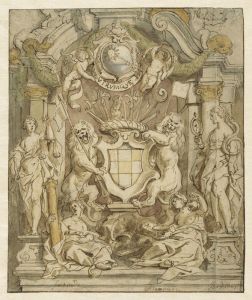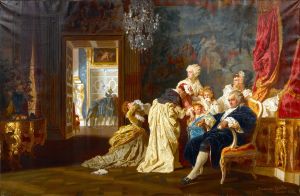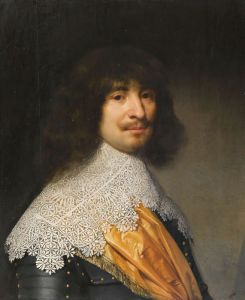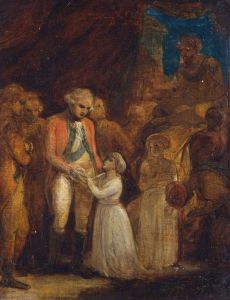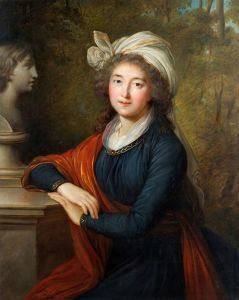
Frederick Henry, his Consort Amalia of Solms, and their Three Youngest Daughters
A hand-painted replica of Gerard van Honthorst’s masterpiece Frederick Henry, his Consort Amalia of Solms, and their Three Youngest Daughters, meticulously crafted by professional artists to capture the true essence of the original. Each piece is created with museum-quality canvas and rare mineral pigments, carefully painted by experienced artists with delicate brushstrokes and rich, layered colors to perfectly recreate the texture of the original artwork. Unlike machine-printed reproductions, this hand-painted version brings the painting to life, infused with the artist’s emotions and skill in every stroke. Whether for personal collection or home decoration, it instantly elevates the artistic atmosphere of any space.
"Frederick Henry, his Consort Amalia of Solms, and their Three Youngest Daughters" is a group portrait painted by the Dutch Golden Age artist Gerard van Honthorst. The artwork, created in 1647, depicts Frederick Henry, Prince of Orange, alongside his wife, Amalia of Solms-Braunfels, and their three youngest daughters. This painting is considered a significant example of 17th-century Dutch portraiture and reflects the political and cultural prominence of the House of Orange-Nassau during this period.
Frederick Henry (1584–1647) was the Prince of Orange and a leading figure in the Dutch Republic during the Eighty Years' War against Spain. His wife, Amalia of Solms-Braunfels (1602–1675), was a German noblewoman who became a key political and cultural figure in the Dutch court. The couple had several children, and the three daughters depicted in this painting are believed to be Albertine Agnes, Henriette Catherine, and Maria, their youngest.
Gerard van Honthorst (1592–1656), the artist, was a prominent painter of the Dutch Golden Age, known for his skill in portraiture and his use of chiaroscuro. He was a favored artist of the House of Orange-Nassau and frequently commissioned to create portraits of the family. This particular painting is notable for its formal composition and the way it emphasizes the familial and dynastic ties of the sitters.
The painting portrays the family in an elegant and dignified manner, with Frederick Henry seated at the center, symbolizing his role as the patriarch and leader. Amalia of Solms stands beside him, reflecting her status as his consort and an influential figure in her own right. The three daughters are arranged around them, dressed in fine clothing that underscores their noble status. The setting and attire in the painting convey wealth, power, and the importance of the family in the political landscape of the time.
This artwork is housed in the Rijksmuseum in Amsterdam, where it is part of the museum's extensive collection of Dutch Golden Age paintings. It serves as both a historical document and an artistic masterpiece, offering insight into the lives and status of one of the most prominent families in 17th-century Europe.





